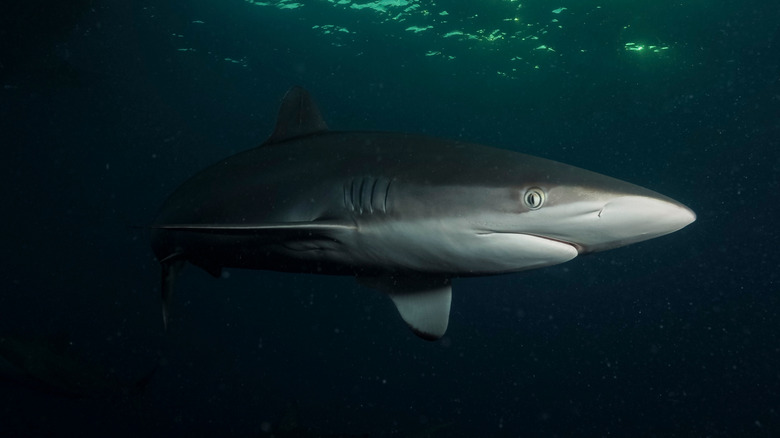Sharkcano: The Active Underwater Volcano Home To Mutant Sharks
An active volcano teeming with mutant sharks sounds like the setting for a B-movie horror flick, but it's real. Just off the coast of Vangunu Island in the Solomon Islands, lies the underwater volcano, Kavachi. At its summit, which sits 66 feet below sea level, is a crater from which ash and magma violently erupt every few years in a blast so intense it looks like a nuclear warhead exploded off in the water. It's the last place that you'd expect to find life, except maybe the indestructible tardigrade, but a National Geographic expedition in 2015 discovered something shocking.
A team led by ocean engineer Brennan Phillips sent underwater cameras into Kavachi's crater, intending to study hydrothermal activity. The footage that returned showed a world of murky water teeming with scalloped hammerheads and silky sharks. Not only that. But stingrays, snapper, and jellyfish were found in the crater as well. It all seemed astounding. Both silky sharks and scalloped hammerheads are typically found in temperate waters somewhere in the range of 70 degrees Fahrenheit. How could these creatures survive in one of the most hostile environments on Earth, one far more extreme than their species' typical habitats? The answer could only lie in genetic mutations.
Being a mutant can be a good thing
The horror and sci-fi genres have done a terrible disservice to the concept of mutation. They frame mutants as grotesque things whose abnormalities make them monstrous, but in reality, being a mutant is often beneficial. Mutation has both advantages and disadvantages, but one thing's for sure: without mutants, none of us would exist. Mutation is the force that drives evolution. Those with beneficial mutations are able to push their species to new places. That certainly seems to be the case in the Kavachi volcano.
It's impossible to overstate how extreme the living conditions of these sharks are. Kavachi is one of the most active underwater volcanoes in the Pacific, erupting every few years, with the most recent blast coming in 2024. The volcano takes its name from the Vangunu god of the sea, and the locals even call it "Rejo te Kavachi," meaning "Kavachi's oven," due to the constant volcanic activity at the site.
The water in Kavachi's crater is not only extremely hot; it's also far more acidic than most ocean water due to the carbon dioxide emitted by the volcano. Ocean acidification is a major driver of climate change, and a 2014 study published in Biology Letters revealed that acidification due to carbon dioxide causes behavioral changes in sharks, including sleeping less frequently. More research will be needed to figure out exactly how the shark's in Kavachi's crater survive, but conducting that research could be challenging considering how active the volcano is.

